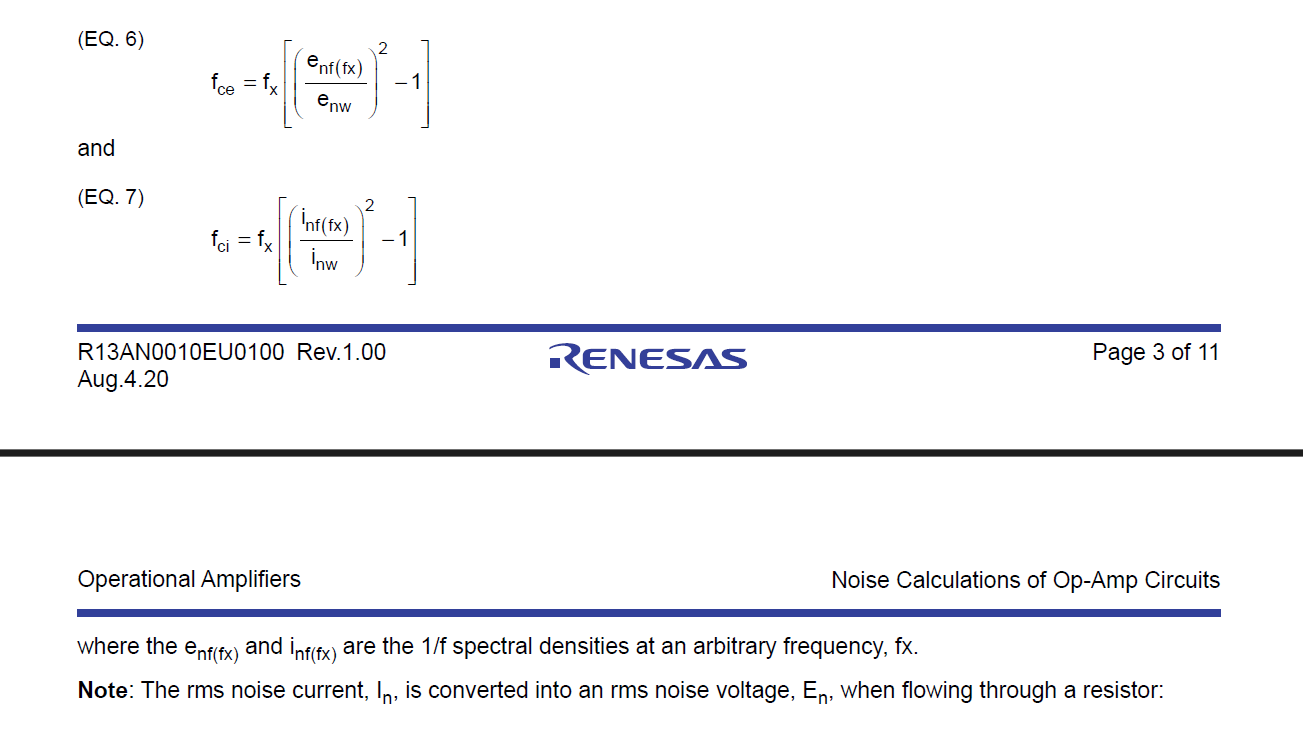My question is why they take 10Hz as fx for calculating fce and 1hz for calculating fci. Is there any rule of thumb for selecting fx?
Well... No not really and the datasheet specifically says it is a 1/f spectral density at an arbitrary frequency, which is fx. Generally speaking, however, putting 1/f (or pink/flicker) noise through a low pass filter typically yields roughly 0.7Hz for a cutoff/corner frequency. If you do a frequency sweep between 0Hz to 10Hz, you will see more granular noise between the two frequencies. After 10Hz, you are practically at an infinitesimally small amount noise amplitude as you enter white noise region.
So I suppose in a way, your fx frequency should not exceed 10Hz if you want to study significant noise amplitude for DC voltage supply operations on an amplifier.



